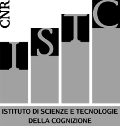Italian is a language with a transparent orthography in which printed words can be translated into the correct sequence of phonemes using a limited set of rules. The rules of letter-sound conversion are, however, simpler for some letters than for others: The pronunciations of sequences involving the letters c and g are determined by complex (i.e., context-sensitive) rules that depend on the letters that follow them. In this article, we report two experiments in which Italian participants read aloud words containing simple or complex letter-sound conversion rules. In Experiment 1, we found that words containing complex rules were read more slowly than words containing simple, noncontextual rules. In Experiment 2, we found that the effect of rule complexity on naming speed held for low-frequency words but not high-frequency words. The results are interpreted in terms of a dual-route model in which rule complexity effects arise from sublexical procedures that are more involved in reading low-frequency words than high-frequency words. The experimental material used in this study may be downloaded from www.psychonomic.org/archive. Copyright 2006 Psychonomic Society, Inc.
Orthographic complexity and word naming in Italian: Some words are more transparent than others
Tipo Pubblicazione:
Articolo
Publisher:
Psychonomic Society,, Austin, TX , Stati Uniti d'America
Source:
Psychonomic bulletin & review 13 (2006): 346–352. doi:10.3758/BF03193855
info:cnr-pdr/source/autori:Burani, Cristina; Barca, Laura; Ellis, Andrew W./titolo:Orthographic complexity and word naming in Italian: Some words are more transparent than others/doi:10.3758/BF03193855/rivista:Psychonomic bulletin & review/anno:2006/pagin
Date:
2006
Resource Identifier:
http://www.cnr.it/prodotto/i/387617
https://dx.doi.org/10.3758/BF03193855
info:doi:10.3758/BF03193855
http://www.scopus.com/record/display.url?eid=2-s2.0-33748785458&origin=inward
Language:
Eng

